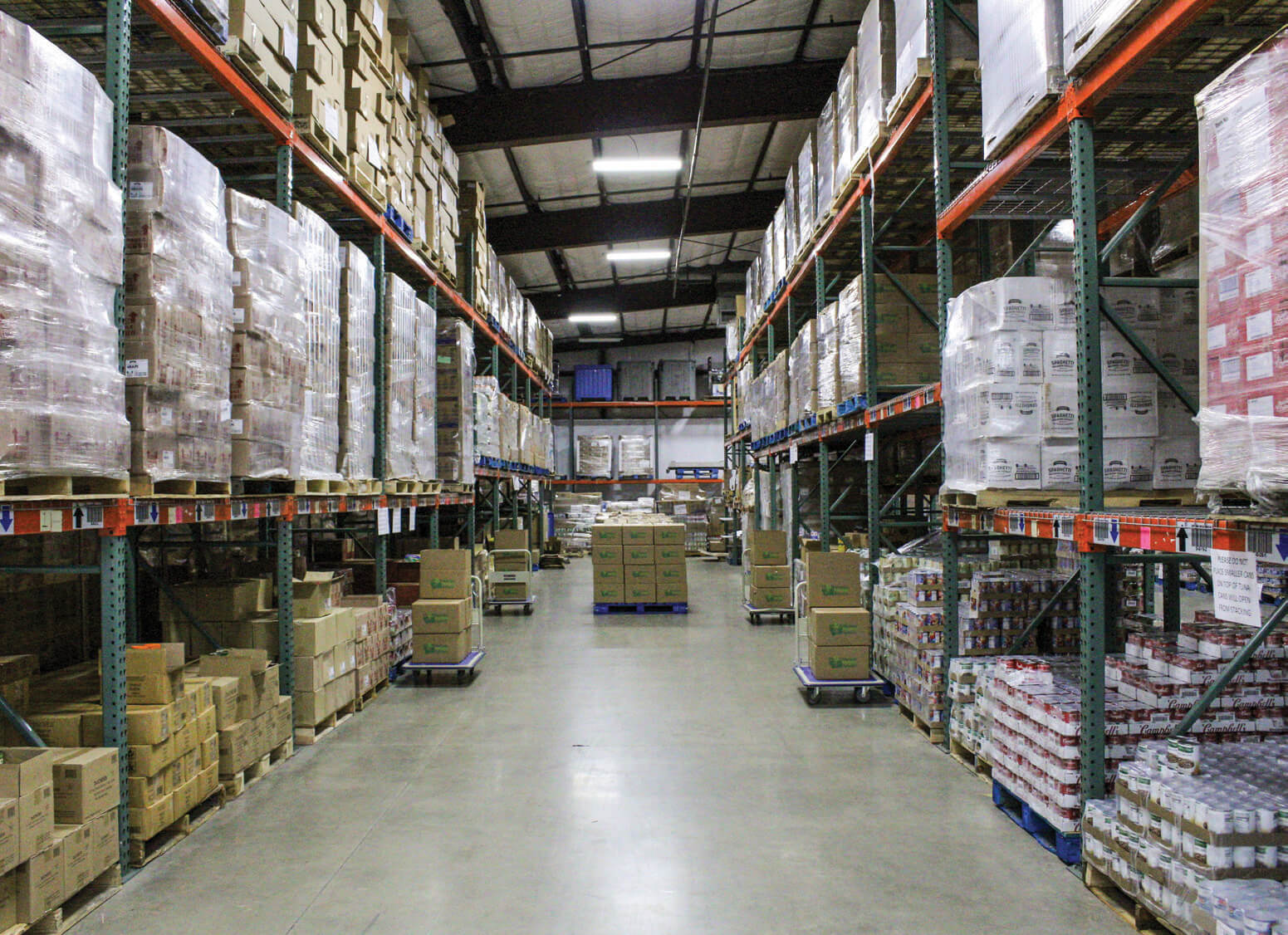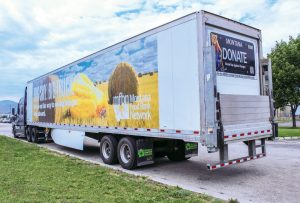
24 Nov Round Up: Nonprofit Spotlight: Montana Food Bank Network
Each year, the Montana Food Bank Network (MFBN) acquires and distributes millions of pounds of food to community pantries across Montana, allowing year-round access to food for individuals and families. Gayle Carlson, MFBN’s president and chief executive officer, shares her perspective on hunger in Montana and provides a glimpse into the behind-the-scenes work of those endeavoring to end it.

In partnership with Montana Fish, Wildlife & Parks, MFBN processes and distributes approximately 45,000 pounds of donated wild game to its network partners each year.
BIG SKY JOURNAL: What is MFBN’s role in local and regional food insecurity interventions?
GAYLE CARLSON: Since its inception in 1982, MFBN has worked with local food banks, pantries, kitchens, senior centers, and shelters to bring local and nationally resourced food donations to their communities. Over the years, MFBN has established partnerships to build the retail-recovery program, implement the BackPack Program to schools, and bring Mail-A-Meal and mobile food pantries to rural, underserved communities. We are currently working with a network of over 360 pantries, shelters, schools, and elderly feeding programs in all 56 counties. In addition to food resources, MFBN provides technical support and training on safe food-handling practices, as well as access to funding through state and national donors and wholesale food purchasing.
Through Feeding America (formerly America’s Second Harvest), the national organization that partners with food banks to distribute resources and advocate for long-term solutions to end hunger, we receive donations from major food manufacturers, as well as excess produce from a Pacific Northwest co-op. We also purchase food in truck-load quantities through a number of brokers and vendors nationwide; receive donations from local producers such as Producer Partnership, Western Montana Growers Co-op, Montana Grain Growers Association, and Montana Farmers Union; partner with the state of Montana to allocate and distribute commodities through The Emergency Food Assistance Program; and facilitate the retail recovery program for local partner pick-ups. All in all, we acquired and distributed nearly 17 million pounds of food to our network of partners in fiscal year 2023.

Trucks for Montana Food Bank Network travel approximately 125,000 miles annually delivering shelf-stable and fresh foods to food banks, pantries, senior centers, and schools around the state. COURTESY OF MONTANA FOOD BANK NETWORK
Additionally, MFBN strives to address the root causes of hunger through advocacy and education. Our policy department works diligently to provide current information to our state and federal policymakers, assist those navigating Montana’s Supplemental Nutrition Assistance Program, and help those with lived experience have a voice in their community and legislature.
Finally, MFBN coordinates with Montana Voluntary Organizations Active in Disaster and statewide Disaster Emergency Services to provide support to our local partners in the event of a natural disaster or community crisis. In the past, we have supported congregate feeding sites during wildfires, provided bottled water to communities with failing water systems, and sent additional food to reservations and communities impacted by floods and snowstorms.
While food banks and pantries can serve their communities far better than we can, we know it takes a lot of time, effort, and money to adequately serve everyone — especially underserved or low-resourced areas — so MFBN is there to help with the big stuff.
BSJ: Is food insecurity in Montana getting worse or better, and how has it been impacted by economic fluctuations?
CARLSON: An estimated 1 in 12 Montanans — including 28,400 children — experience food insecurity, which is defined by the U.S. Department of Agriculture (USDA) as a lack of consistent access to enough food for every person in a household to live an active, healthy life. According to the USDA, 25 Montana counties are considered low-income with limited access to a grocery store (more than 10 miles in a rural area or more than 1 mile in an urban area).
While monthly activity reports gathered from our network partners show a steady number of households seeking assistance over the past three years — an average of 38,000 households each month — the frequency of that assistance has increased dramatically. In early 2020, households were visiting their local pantry an average of two to three times each month; during the same period in 2023, rising food, housing, and fuel costs created a greater demand, doubling and tripling many households’ monthly reliance.
BSJ: What are your goals for the years ahead, and how can people help MFBN realize those goals?
CARLSON: Like the people served by our network, MFBN has experienced the pains of inflation. Our food costs have risen 20 percent on average over the past two to three years. Our fleet of semitrucks travels over 125,000 miles each year delivering to the network, so we are also feeling the rising fuel and transportation costs.
Over the long term, MFBN is working toward building a new facility that will double our size, allowing for an increase in services and cost efficiencies. We are currently in the quiet phase of our campaign and hope to open the public phase in the spring of 2024.
Anyone you speak to who works in this field will say that their idea of success is when they are out of a job. It means that everyone has consistent access to affordable, nutritious food, and emergency assistance is no longer needed. But, realistically, we know that there will always be households that struggle for a variety of reasons, and the best we can do for them is provide access to adequate food resources. To do that, we need to ensure that all of our network partners have a reliable food supply and the capacity to serve their neighbors in need.
For more information about Montana Food Bank Network or to donate or volunteer, visit mfbn.org or call (406) 721-3025.




No Comments